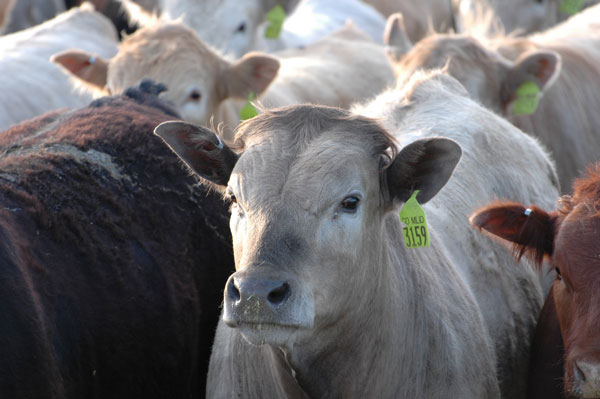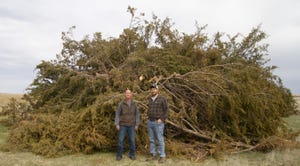Burke Teichert: Is that new advancement in tech actually making your ranch better?
Just because we can do something doesn’t mean we should. Call me the devil’s advocate, but I encourage you to think through these seven questions before deciding what technology is really useful for your operation.
December 29, 2016

Among my early childhood recollections are a time when our ranch did almost all of its work with horses, horse drawn equipment and people. We had one tractor and, in the summer, used it to mow hay. The rest of the haying was done with teams of horses and implements designed for them to pull and get the jobs done.
By the time I started to drive a team of horses pulling a dump rake to help in the hay field, we had two tractors; and over the next few years, horses were phased out and tractors or modified trucks (reversed) provided all of the horsepower for harvesting hay. In those days, the tractors, equipment and fuel were cheap. The technology and prices from then until now have changed in an almost astounding way.
As I sit at my computer today, I think back to the late 1970s and early 80s when I was first introduced to desktop and later laptop computers. I hated the things from the beginning, but I began to love what they would do for me—especially when I had an office manager or administrative assistant who would make them (the computers) work for me. We could, all of a sudden, do so many more things.
Now, after watching this unfold, I am asking myself how much of this technology should I be using or recommending to my clients? Just because we can do something doesn’t mean we should. This thought applies across all of agriculture and our attempts to make our businesses fun and profitable.
I am not ready to tell a broad audience what technologies they should or should not adopt. Those decisions need to be made to fit the situation. Let me point to a few Ideas/questions that I think warrant some consideration. By the way, I have said before that it is much more important for good managers to know the right questions than to know the answers. If they know the right questions, they will find the answers. This is much better than answering wrong or unimportant questions.
With the increase in size and cost of haying equipment, should we still put up all the hay, put up less or not put up any? Could we use “new” techniques to provide grazing for a greater portion or even all of the year? Could we buy hay to meet our needs?
Has your workload diminished since you started using a PC or laptop? Is there really a payback for all the things you are asking it or your smart phone to do? How much time is wasted in frivolity or low-impact ideas, thinking and tasks?
How about AI, estrus synchronization and embryo transfer technology? Who should be using these and who should not? How much are we diminishing genetic diversity and what are the potential future problems and cost of that? Could genetic diversity be helpful in adapting our livestock to climate changes or to our management changes?
What about insecticides? Do we only kill the target organisms? No! How many beneficial ones do we kill? What have we done to the balance that nature tries to achieve? Do livestock still have the need to develop genetic resistance to the pests? Can livestock develop genetic resistance to pests? Which happens faster—do the pests develop resistance to the pesticides or do the manufacturers of pesticides develop new chemicals faster?
What about herbicides? Do we really need to kill every weed—especially in pastures? What about resistance issues? Are there other ways to reduce weed pressures—farming techniques, grazing methods? Do we know what they are and how to implement them? I have a good friend who is also a very good grazier. He recently told me he is becoming a very good weed farmer. He then pointed out that many of the weeds (I prefer to call them forbs) are eaten by his cattle. Many of the forbs have excellent feed values and are sometimes medicinal for cattle.
There are symposia, magazine articles and much talk about no-till farming and cover crops. What do we know about that? If we were to try it, what would we have to learn? What are the advantages, disadvantages and challenges? Does technology help us learn and implement better?
We hear more and more about various implementations of high-intensity, low-frequency grazing. How much do you really know about it? Have you looked for the successes or the failures in an attempt to support your preconceived idea? Do you understand the principles upon which time-controlled grazing is based?
Now for me, I am not ready to return to the 1950s’ methods of haying; nor am I advocating that you or I throw away our computers and smart phones. I do not recommend the abandonment of AI or ET. I do not like poisons because they simplify the environment and reduce biodiversity. However, I continue to use them—just a lot less and with great caution. I know ranchers in nearly every area of the U.S. that have quit using wormers and other pesticides. They had to cull some animals that couldn’t handle or resist the pests, but they now have good cattle health, performance and reproduction.
I think each of the mentioned technologies and many others have their place, but we should recognize that technologies are sold by salesmen; and, though well intended, they will almost always try to sell you more than you should buy or use.
I have a huge preference to move away from a high dependence on fossil fuel and equipment to a higher dependence on sunlight, rainfall, soil and our creative abilities to learn, observe and adopt and use nature as a model for more of what we do. For those reasons, I very much favor farming with the use of no-till and cover crops and grazing with what I like to call managed, time-controlled, adaptive grazing, which can take on a number of shapes depending on location and goals.
With these practices you learn to view nature as a partner instead of an enemy. Modern technology for fencing and stock water placement provides wonderful tools to facilitate good grazing. Other technologies for mapping, planning, planting, recording yields, etc. have made implementation of these techniques more practical and efficient. Then there is the technology of the mind which is simply a better understanding of the science surrounding soil health, range and crop production and animal health, production and well-being.
There is a world full of wonderful technology. We can’t and shouldn’t adopt it all. In fact, we must be careful to not be oversold. We must be economically selective and make sure that there is a good economic return for the technologies that we adopt. Some very good and useful technologies will not fit every operation.
About the Author(s)
You May Also Like
.png?width=300&auto=webp&quality=80&disable=upscale)


